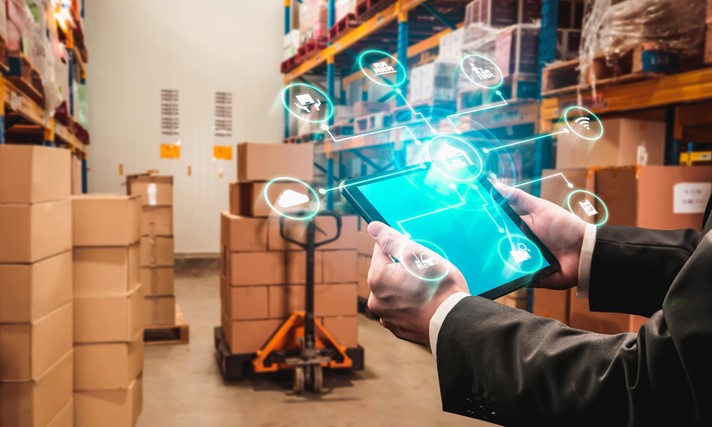
With the effects of COVID-19 still prevalent worldwide, what changes can we expect to see for logistics and shipping companies? We explore this question below, looking forward to the future of logistics and supply chains. Learn more about the benefits of cloud-based solutions and how automated OCR software powered by artificial intelligence can help.
If you haven’t yet, please check out the first part of this article, where we discussed the benefits of automation in logistics.
The Future of Logistics and Supply Chain
The serious economic implications of COVID-19 within the logistics and supply chain industry will likely be felt for years. When considering the impact of COVID-19 on industry operations so far, there have been major disruptions throughout, and global supply chain activities have also been impacted.
While the post-COVID future is still uncertain, the logistics industry is predicted to look very different, and companies continue to re-evaluate their supply chain management. COVID-19 revealed how stretched global supply chains had become and how this increased business vulnerability to disruptions. Breaks in any part of the process could affect the entire business. To avoid this and increase future resilience, supply chains post-COVID are likely to be shorter to ensure quicker delivery of goods to endpoints.
Companies are increasing their resilience and staying afloat by bringing in more localised supply chains and relying on localised suppliers. Product integrators and component suppliers will also create more in-house sourcing and delivery options to reduce dependencies and establish a flexible supply chain.
One of the things seen during COVID-19 is that companies with lower inventory levels have suffered more setbacks due to limited goods availability. Companies must maintain higher inventory levels as a ‘safety buffer’ to avoid future demand shortages. Nowadays, companies are valued more for their resilience and sustainability.
While many small logistics companies have been forced into bankruptcy, large cash-rich logistics companies have grown by acquiring bankrupt businesses at bargain prices. This change in the market will reduce competition, resulting in higher concentrations of power. So, how can logistics companies gain competitive advantages to increase resilience and scalability to compete on a national and international scale?
Is Process Automation the Answer?
Reshaping supply chains to keep up in the post-COVID world is essential. Logistics companies will need to upgrade systems across the supply chain; these upgrades should include enhanced navigational abilities, automated tracking and alerts, digital tracking in real-time, capacity and congestion planning, route optimisation, and more. Direct contact between people is often a necessary process, however, by implementing technology across the supply chain that reduces reliance on people, logistics companies can enable greater efficiencies, faster access to information, and better planning and execution of their tasks.
Additionally, the post-COVID world will see more online purchases versus in-person purchases from local stores. These changes in buying habits are likely to continue well into the post-COVID future, and distribution centres and warehousing spaces will need to meet requirements to cater to this demand.
Implementing automated data capture and processing solutions helps companies optimise their operations for the safe and efficient movement of goods.
Why Work in the Cloud as You Ship Across the Seas
Document management from the cloud offers a range of benefits, including convenience, reliability, cost reduction, scalability, and resilience. Company data and purchase-order information must always be secure and accessible only to authorised individuals who work with it.
Cloud-based automation for logistics companies ensures that your shipping documents are available when you need them, no matter where you are. At the click of a button, employees can easily cross-check information to confirm that the shipment and receipt of the goods are accurate.
With cloud-based, multi-language document management solutions such as Xtracta, the limitation of language barriers is also removed. Xtracta’s self-learning ability is powered by artificial intelligence and machine learning, enabling hands-free data extraction from an unlimited number of document designs in a variety of languages.
The Benefits of Automated Document Capture Software
Document capture software that extracts important information from documents, such as Xtracta’s easy-to-use API, can be integrated with virtually any logistics document management system, allowing for the fast and accurate processing of large volumes of documents.
Logistics and transportation companies work with numerous document types including:
- Invoices
- Bills of lading
- Shipping slips
- Customs documents
- Packing lists
Many of these documents contain industry-specific fields as well. The capacity to accurately capture, archive, and search for key data in these documents (e.g., shipping point, loading group, and delivery type) is essential to avoid inefficiencies and delays.
An often-overlooked aspect when selecting data extraction solutions is ensuring that the chosen solution can integrate with a company’s existing systems. For example, were a company to integrate with an incompatible extraction solution, the extracted data may be inaccessible and potentially useless to other programs in the company’s IT infrastructure.
Get in touch with the team to discover how Xtracta works with your existing software
Xtracta’s easy-to-use API can be seamlessly integrated into your existing logistics electronic system and personalised to your business needs. Get in touch with the team today to discover how Xtracta’s AI-powered OCR and data extraction software works with your existing software and can be tailored to meet the specific requirements of your industry.










